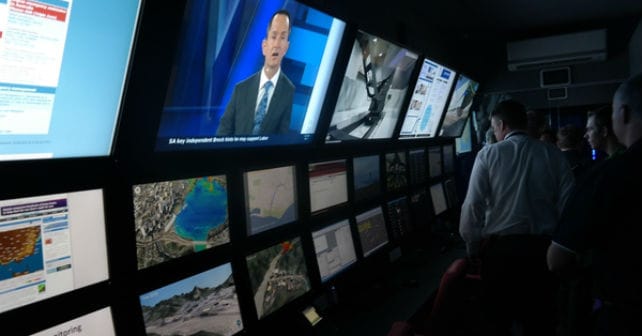How to harvest energy by breaking rules of physics
 The laws of physics don’t always apply, according to a new discovery by physics researchers at the Massachusetts Institute of Technology (MIT).
The laws of physics don’t always apply, according to a new discovery by physics researchers at the Massachusetts Institute of Technology (MIT).
While they haven’t devised a perpetual motion machine or found a means of time travel, the MIT scientists have found that — contrary to the physical laws that determine the rate of heat transfer between two objects — when brought very, very close together (10 nanometers or so), two objects can transfer heat at a rate more than 1,000 times greater than predicted.
The discovery has actually been predicted for a long time, but no one’s been able to demonstrate it in real life up until now.
The researchers say their finding could yield a host of new technological applications, including new devices for harvesting energy from waste heat.
The “broken” physics rule in question is Max Planck’s 1900 explanation for how an ideally non-reflective object — a blackbody — dissipates energy at different wavelengths as the object’s temperature changes. The law reflects reality well at the macro-scale, but even Planck suggested the rules might not apply when objects are separated by the tiniest of distances.
“Planck was very careful, saying his theory was only valid for large systems,” said Gang Chen, MIT’s Carl Richard Soderberg Professor of Power Engineering and director of the Pappalardo Micro and Nano Engineering Laboratories. “So he kind of anticipated this (breakdown), but most people don’t know this.”
Chen and his research team found a way to bring two objects super-close by using a flat surface next to a small round glass bead, whose position was easier to control.
“If we use two parallel surfaces, it is very hard to push to nanometer scale without some parts touching each other,” Chen said. With a spherical object, though, there’s just a single point of near-contact, which is much easier to maintain. The team then used the technology of the bi-metallic cantilever from an atomic-force microscope to measure the temperature changes with great precision.
Sir John Pendry of Imperial College London, who has done extensive work in this field, called the results “very exciting.”
“Experimental confirmation has proved elusive because of the extreme difficulty in measuring temperature differences over very small distances,” Pendry said. “Gang Chen’s experiments provide a beautiful solution to this difficulty and confirm the dominant contribution of near field effects to heat transfer.”
The discovery could help improve today’s magnetic data recording systems, such as those used in a computer’s hard disk. The recording head — typically 5 to 6 nanometers away from the disk surface — tends to heat up, and researchers have been looking for ways to manage the heat or even exploit the heating to control the gap.
“It’s a very important issue for magnetic storage,” Chen said, adding that such applications could be developed quite rapidly and some companies have already shown a strong interest in his work.
The new findings could also lead to the development of new photovoltaic energy conversion devices — “thermophotovoltaics” that could harness photons emitted by a heat source.
“The high photon flux can potentially enable higher efficiency and energy density thermophovoltaic energy converters, and new energy conversion devices,” Chen said.




